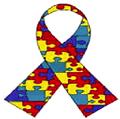
SENECA AUTISM LEARNING & SUPPORT ASSOCIATION

North Central Ohio ESC © 2014
Autism is one of the 5 Pervasive
Autism statistics from the U.S. Centers for Disease Control and Prevention (CDC) identify around 1 in 68 American children as on the autism spectrum–a ten-fold increase in prevalence in 40 years. Careful research shows that this increase is only partly explained by improved diagnosis and awareness. Studies also show that autism is four to five times more common among boys than girls. An estimated 1 out of 42 boys and 1 in 189 girls are diagnosed with autism in the United States.
Developmental Disorders
Autism Symptoms
Checklist
Autism is one of the five pervasive developmental disorders (PDD), which are characterized by widespread abnormalities of social interactions and communication, and severely restricted interests and highly repetitive behavior. These symptoms do not imply sickness, fragility, or emotional disturbance.
Of the five PDD forms, Asperger syndrome is closest to autism in signs and likely causes; Rett syndrome and childhood disintegrative disorder share several signs with autism, but may have unrelated causes; PDD not otherwise specified (PDD-NOS; also called atypical autism) is diagnosed when the criteria are not met for a more specific disorder. Unlike with autism, people with Asperger syndrome have no substantial delay in language development. The terminology of autism can be bewildering, with autism, Asperger syndrome and PDD-NOS often called the autism spectrum disorders (ASD) or sometimes the autistic disorders, whereas autism itself is often called autistic disorder, childhood autism, or infantile autism. Autism refers to the classic autistic disorder; in clinical practice, though, autism, ASD, and PDD are often used interchangeably. ASD, in turn, is a subset of the broader autism phenotype, which describes individuals who may not have ASD but do have autistic-like traits, such as avoiding eye contact.
Do not try to communicate by pointing or miming
Do not speak as well as other children their age
Make little or no eye contact
Tend to spin toys or line them up rather than play with them
Show no response when smiled at
Do not use their imagination during play
Are prone to tantrums for no apparent reason
Would rather play alone because they do not interact with other children
Can become unusually attached to objects









impairments in social interaction, communication, and imaginative play prior to age 3 years. There are stereotyped behaviors, interests and activities.
Characterized by impairments in social interactions and the presence of restricted interests and activities, with no clinical significant general delay in language and testing in the range of average to above average intelligence.
Commonly referred to as atypical autism, a diagnosis of PDD-NOS may be made when a child does not meet the criteria for a specified diagnosis, but there is a severe and pervasive impairment in specified behaviors.
A progressive disorder which, to date, has occurred only in girls. Period of normal development and then loss of previously acquired skills, loss of purposeful use of the hands replaced with repetitive hand movements beginning at the age of 1-4 years.
Characterized by normal development for at least the first 2 years, significant loss of previously acquired skills. (American Psychiatric Association 1994)
